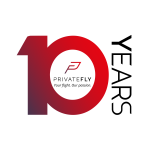How fast can a private jet fly?
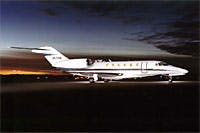
When it comes to overall journey time, a private jet beats an airline flight every time.
Passengers can check in just minutes before take-off; often drive right up to the aircraft steps; and land at many more airports, saving significant time on ground transfers.
But what is the world’s fastest private jet and can it fly faster than airline flights? PrivateFly investigates…
The fastest passenger aircraft in the world is currently Cessna’s Citation X business jet, which flies just under the speed of sound at a cruising speed of 604 mph. This compares to the fastest aircraft used by airlines, the Boeing 747, which has a cruising speed of just over 500 mph.
However there are a number of factors other than engine capability, which affect an aircraft’s speed. Rate of climb and cruising altitude also play a significant part. Just like driving a car, an aircraft does not reach its cruising speed until it has clearance to do so – and this can only happen when it has moved out of congested skies.
Private jets can often climb quicker, reach their optimum altitude and take a more direct routing than airline flights, which can result in reduced flying times. Additionally an airliner’s passenger and luggage weight will restrict its ability to reach its optimum height and flying speed.
Later this year, the Citation X will lose its title as the queen of speed when Gulfstream’s much-awaited G650 becomes available on the private jet charter network.
Here are the current speed contenders and a look at the leading supersonic concept in development, which could get you across the Atlantic in time for a second breakfast:

Cessna’s Citation X
The world’s fastest in-production jet is the Cessna Citation X. At a range of 3216 nautical miles the Citation X offers 12 seats in a 1.73 metres high cabin at cruising speeds of up to 604 mph (Mach 0.92).
That’s almost 100 miles per hour faster than the standard cruising speed of an Airbus A320. On a five-hour trip from London to Cairo, that could save you about 50 minutes flight time.
Standard seating configurations include 8 executive seats, a fully equipped galley and a bathroom / dressing room.
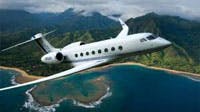
The Gulfstream G650
The Citation X will soon lose its title as the sky’s current speed queen with the arrival of Gulfstream’s new G650 model. Deliveries will begin later this year.
With a record speed of 704 mph (Mach 0.925) it is faster than the Citation X and offers a range of 7000 nautical miles on long-range cruise. That gives the G650 the capability to do non-stop transatlantic journeys; on a trip from London to New York this could save you more than one and a half hours.
Manufacturer Cessna has already announced there will be a new improved version called ‘Citation Ten’ out in 2013 to bring the title of the fastest in-production jet back to Kansas.
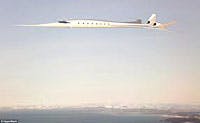
The HyperMach SonicStar
Since the demise of Concorde in 2003, supersonic flights have been off the mainstream aviation radar, and many believe it’s unlikely that we’ll see a commercial airliner travelling at these speeds again. But the prospects for private aviation look much brighter.
Currently in development, the futuristic SonicStar is designed to carry up to 20 people travelling speeds of 2740 mph. This would enable a trip from Paris to New York in less than 2 hours and would make the SonicStar the world’s fastest passenger aircraft.
One major reason for suspending Concorde operations in 2003 was its prohibitive operating costs. To fly from London to New York, Concorde used about the same amount of fuel as a fully loaded 747 which could carry four times as many passengers.
Manufacturer HyperMach claims the SonicStar will be 30% more efficient than Concorde. To save weight the hull and wings of the jet will be largely built from super lightweight materials such as composite or titanium.
Then there is the SonicStar’s propulsion concept called the S-MAGJET. Unlike current jet engines this is a hybrid system in which a generator unit provides electric energy used by highly efficient propulsion fans. This is a totally new concept in aviation which HyperMach claims would result in 70% more operational efficiency and a significantly reduced carbon footprint compared to other aircraft. In fact, you wouldn’t hear any supersonic boom from the ground.
Other manufacturers are working on designs for supersonic jets, including the Aerion Corporation, but the Citation X, G650 and their rivals can rest easy for a few more years. Such ground-breaking technology takes time, so we will probably have to wait another decade or more to see supersonic aircraft in action.
Related content
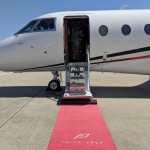
Three special ‘Leap Day’ trips by private jet

A day trip to Nice by private jet
